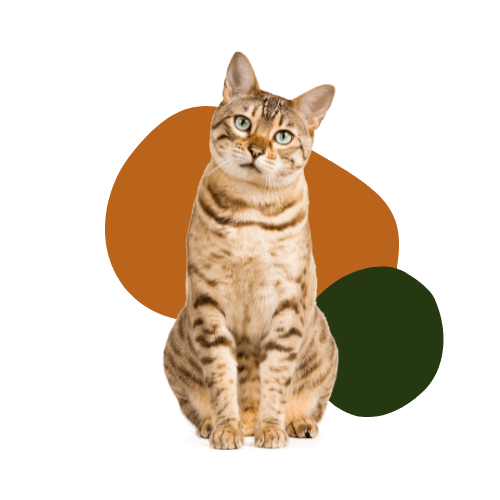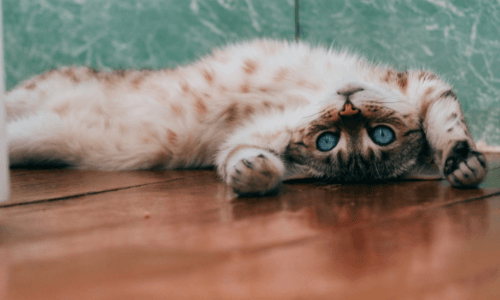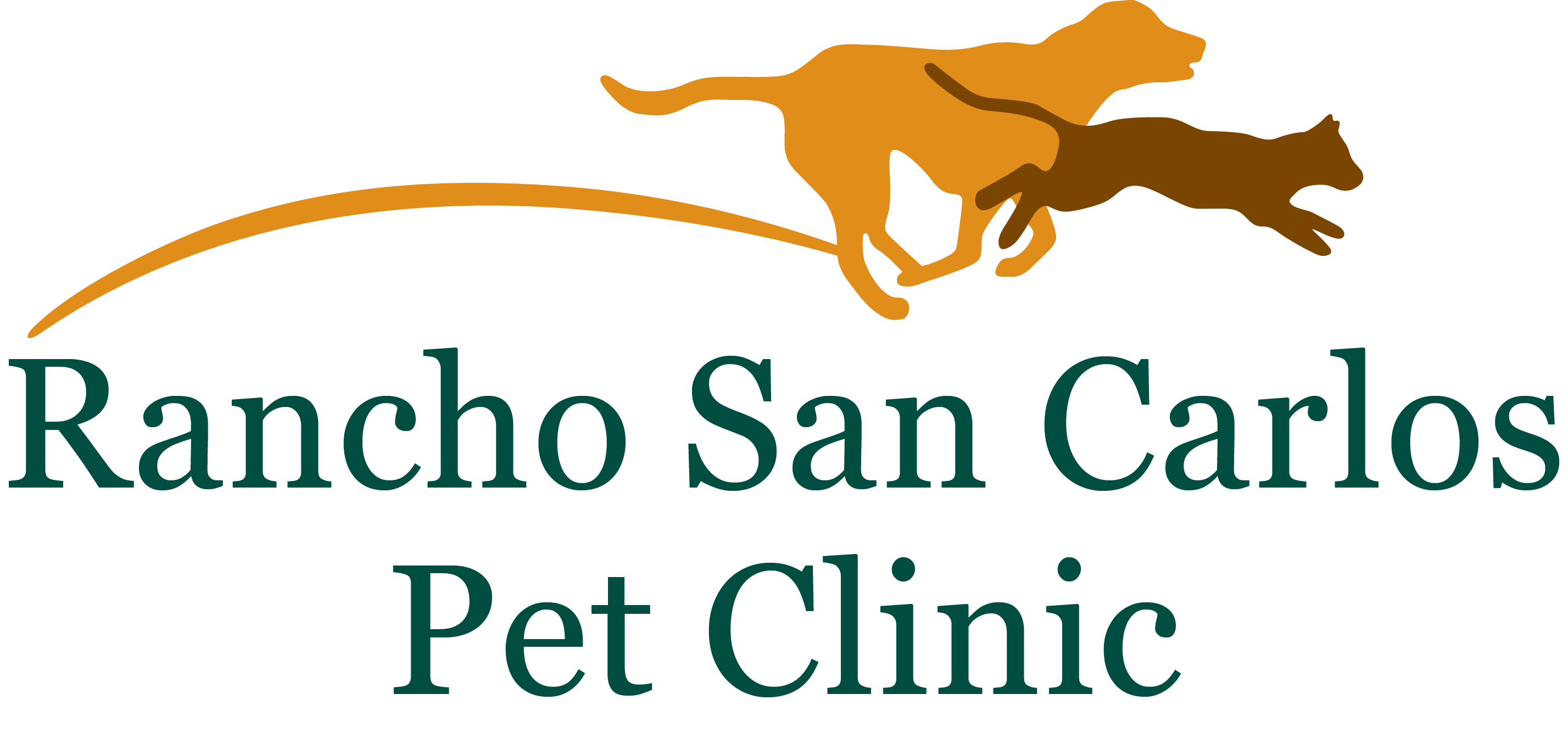Pet Complete Dental CareRancho San Carlos Pet Clinic
Dental Care includes cleaning and polishing, digital x-rays, and oral surgery for the overall health of your pet’s mouth.

Pet Complete Dental Care

Pet Dental Care is important For Several Reasons:
-
- Gum infections can cause your pet pain and discomfort.
- Gum and tooth infections can lead to infections/inflammation elsewhere in the body (heart, kidney, liver, etc.).
- Halitosis (bad breath) can make your pet unpleasant to be around.
- Addressing problems early can save your pet discomfort and can save you money in the long run.
Dental Cleanings
A dental cleaning appointment will include a comprehensive dental examination, teeth cleaning, and polishing to eliminate tartar and plaque that causes periodontal disease. This procedure is carried out while your pet is sedated. Once anesthetized, your veterinarian will extensively inspect the mouth with the assistance of veterinary assistants, noting any anomalies in the medical record. Gum bleeding and periodontal pockets, where food can gather and deteriorate if not properly cared for, will be assessed with a dental probe.
The Procedure:
-
- A blood sample will be drawn from your pet for analysis to identify any potential problems that the doctor needs to be aware of and to determine if your pet is healthy enough to undergo anesthesia.
- Your pet is anesthetized. This is often what worries most pet owners, however, under proper protocols, anesthesia is very safe. We will use the safest anesthetics for your pet and monitor their vital signs with advanced veterinary monitoring equipment. The doctor will always be present during the procedure.
- Intravenous fluids (through a catheter in your pet’s leg) are always provided. This improves safety, recovery, and comfort.
- A full cleaning under the gum-line where periodontal disease lurks. It would be impossible to clean this area on an awake dog or cat, but this is where periodontal disease begins with bacteria “living” below the gum tissue.
- Scaling and polishing of the crown or visible part of your dog or cat’s teeth. A veterinary cleaning does require scaling or scraping the tooth to remove plaque and calculus. Scaling is completed to remove plaque and tartar build-up on the tooth crown.
- The doctor performs a complete oral exam. Radiographs (x-rays) are taken if indicated to identify any problems beneath the gum line. Common painful problems that could be identified with radiographs are broken teeth and roots, periodontal disease, dead teeth, abscesses, or infected teeth. We recommend dental x-rays with every cleaning.
- Last, the teeth are polished leaving a completely smooth surface of the tooth, which discourages plaque and bacteria from adhering to the rough tooth surface. Then a fluoride foam is applied to the teeth.
Advanced Procedures
Clindoral:
-
- A healthy tooth has gingiva (gum) that is closely adhered to and protects against bacteria
- For teeth that have deep pockets (space between the tooth and the gumline), bacteria have a safe haven to live in the mouth. Those bacteria cause progressive dental disease, gingiva and bone loss, and dental abscesses.
- If the tooth is healthy other than this pocket, we can perform a deep cleaning, root planing, and apply an antibiotic gel (Clindoral) into the pocket. This keeps bacteria out of the area and allows the gingiva to heal back to the tooth.
- The goal of this procedure is to save the tooth while preventing the worsening of dental disease. This tooth should be monitored closely with annual dental cleanings.
Bonded Sealant:
-
- When a tooth is cracked, the outer enamel can no longer protect it from the outside world, and the softer dentin material is exposed. If the root is not exposed as well, we can then apply a bonded sealant to the dentin, which acts as protective armor.
- This can also protect teeth with the enamel hypoplasia condition, where enamel was not formed correctly during juvenile development.
- These teeth should be closely monitored with annual dental cleanings.
Protective Sealant:
-
- For pets who do not tolerate brushing, a protective sealant called Sanos can be applied at the end of the dental procedure. This adds a protective coating to the teeth, which prevents bacteria from attaching for 6 months. Talk to one of our veterinarians to determine if this product is right for your pet.
Extractions:
-
- Unfortunately, some teeth cannot be saved. We perform local blocks that numb the area prior to extraction and keep your pet comfortable after they wake up from anesthesia.
- Our staff has undergone specific dental training. We have the ability to perform surgical flaps and advanced extractions. For certain extractions, a referral to a veterinary dentist (specialist) may be required for your pet’s health. Please know we will recommend what is best for your pet.
- Following extractions, your pet should be fed soft food for 10-14 days.
- All suture material used is dissolvable, so it does not need to be removed.
Annual Dental Health Promotion!
We believe that regular dental cleanings will keep your pet’s teeth and body healthy. With routine cleanings, your pet is less likely to need extractions, will be under anesthesia for less time, and we can monitor any teeth on our “watchlist.”
As such, we have created the ANNUAL DENTAL HEALTH PROMOTION to give you money back on your pet’s dental cleaning.
If it has been less than 15 months since your pet’s last dental cleaning with us, you can get a $100 coupon off the dental cleaning with x-rays (or $50 if no x-rays performed).
The following is taken directly from the American Dental College (AVDC) website:
Reasons Not to Choose Anesthesia Free Dentals For Your Pet
Those that provide Anesthesia Free Dentistry or No Anesthesia Dentistry (NAD) would like you to believe by removing visible tartar from the teeth they are improving oral health. This is just not the case and the AVDC wants you to consider the following reasons not to choose an anesthesia-free dental for your pet:
- Scaling (scraping the surface of the tooth with an instrument) the plaque and tartar from the outside surfaces of the teeth does not remove the plaque and bacteria from beneath your pet’s gum line and does not decrease the risk of your pet getting periodontal disease. Consider this, the same level of “gross” build-up you see on your pet’s teeth, is also thriving beneath their gumline where you can’t see it or the damage it’s doing. Cleaning and scaling below the gum line are most important because it’s where periodontal disease is most active. This can’t be done without anesthesia.
- Anesthesia free dental cleanings require your pet to be restrained while the visible tartar is removed. In some cases this is stressful and painful. It is not fair to put your beloved dog or cat through the process without anesthesia.
- There are few visible signs of periodontal infection before it has progressed too far to treat and save teeth. Anesthesia is needed to best evaluate periodontal disease with the help of a dental probe and x-ray examination to truly sense what is going on below the gumline.
- A thorough oral health exam can’t be done on a dog or cat that is awake. During a thorough oral health exam, all surfaces of your pet’s mouth are evaluated and radiographs (x-rays) are taken (if indicated). This allows a veterinarian to identify painful problems including broken teeth, periodontal disease, or even oral tumors. An oral health exam and x-rays can’t be done on an awake pet.
- Teeth that have been scaled and not polished are a prime breeding ground for more bacteria growth which perpetuates oral disease.
- Anesthesia free dental cleanings provide no benefit to your pet and do not prevent periodontal disease at any level. In fact, it gives you a false sense of security as a pet owner that because the teeth look whiter that they are healthier.
- The costs of anesthesia-free dental cleanings are cheap, to begin with. The ultimate costs to both your wallet and pet’s dental health, are far more of an expense.
*** Their website avdc.org/AFD/ is a good resource for additional information concerning oral health and periodontal disease.
